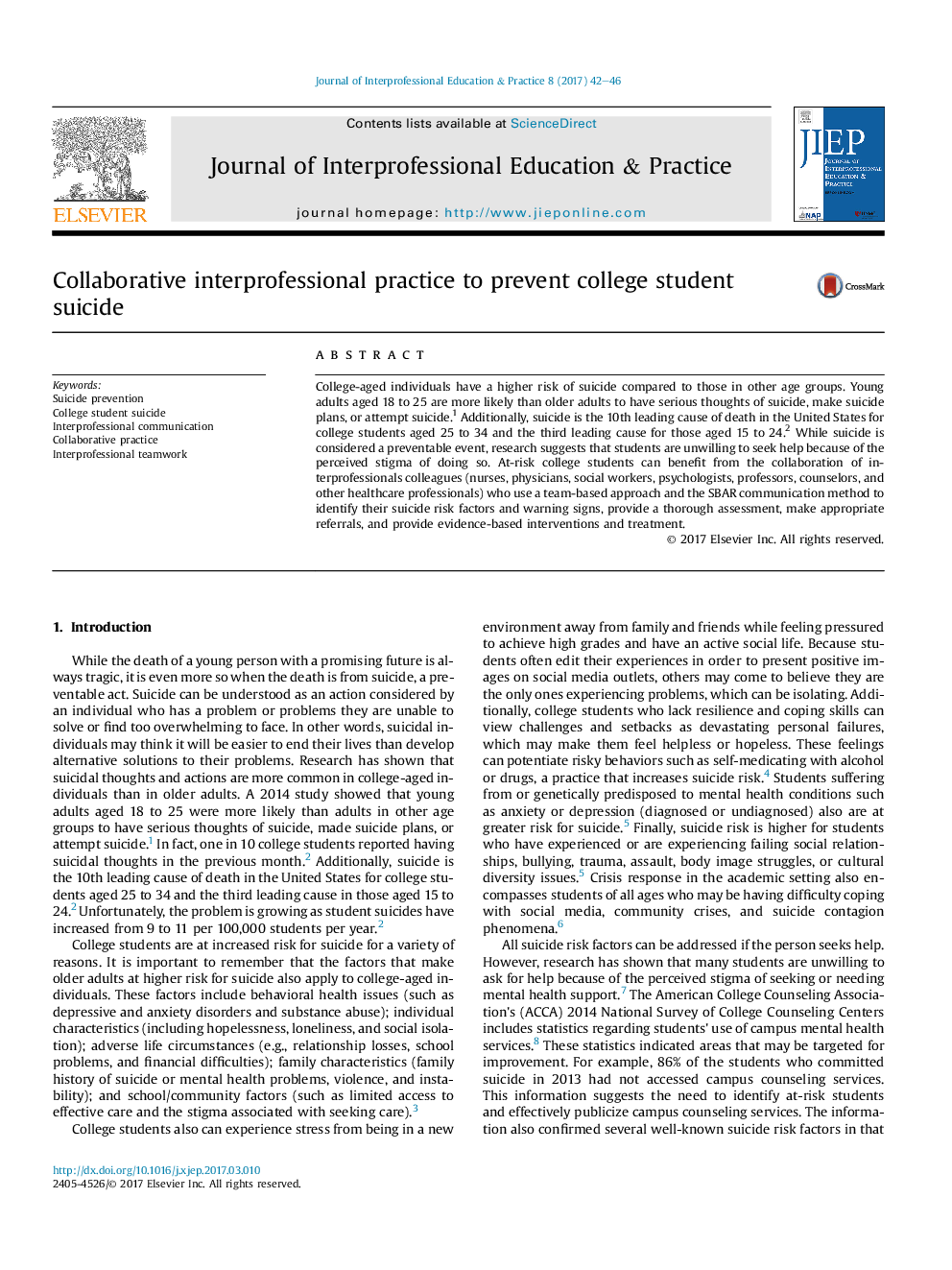| Article ID | Journal | Published Year | Pages | File Type |
|---|---|---|---|---|
| 5569394 | Journal of Interprofessional Education & Practice | 2017 | 5 Pages |
Abstract
College-aged individuals have a higher risk of suicide compared to those in other age groups. Young adults aged 18 to 25 are more likely than older adults to have serious thoughts of suicide, make suicide plans, or attempt suicide.1 Additionally, suicide is the 10th leading cause of death in the United States for college students aged 25 to 34 and the third leading cause for those aged 15 to 24.2 While suicide is considered a preventable event, research suggests that students are unwilling to seek help because of the perceived stigma of doing so. At-risk college students can benefit from the collaboration of interprofessionals colleagues (nurses, physicians, social workers, psychologists, professors, counselors, and other healthcare professionals) who use a team-based approach and the SBAR communication method to identify their suicide risk factors and warning signs, provide a thorough assessment, make appropriate referrals, and provide evidence-based interventions and treatment.
Keywords
Related Topics
Health Sciences
Medicine and Dentistry
Public Health and Health Policy
Authors
Helene Vossos,
